Arm Lift in Panama
Search and Compare the Best Clinics and Doctors at the Lowest Prices for Arm Lift in Panama
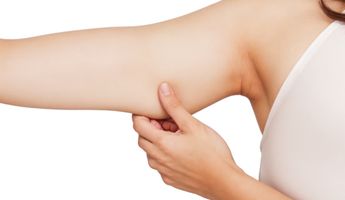
Find the best clinics for Arm Lift in Panama
No clinics available
Thailand offers the best prices Worldwide
Price: $ 26

- Home
- Panama
Compare Before & After Photos of _procedure_photos.phpArm Lift


Full-side view
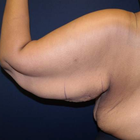
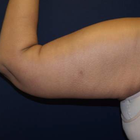
Full-side view
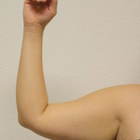
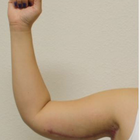
Full-side view


Full-side view

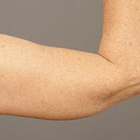
Full-side view

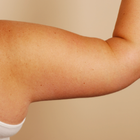
Full-side view
WHY US?
At Medijump, we're making medical easy. You can search, compare, discuss, and book your medical all in one place. We open the door to the best medical providers worldwide, saving you time and energy along the way, and it's all for FREE, no hidden fees, and no price markups guaranteed. So what are you waiting for?

Free

Best Price

Widest Selection

Risk-Free
What you need to know about Arm Lift in Panama
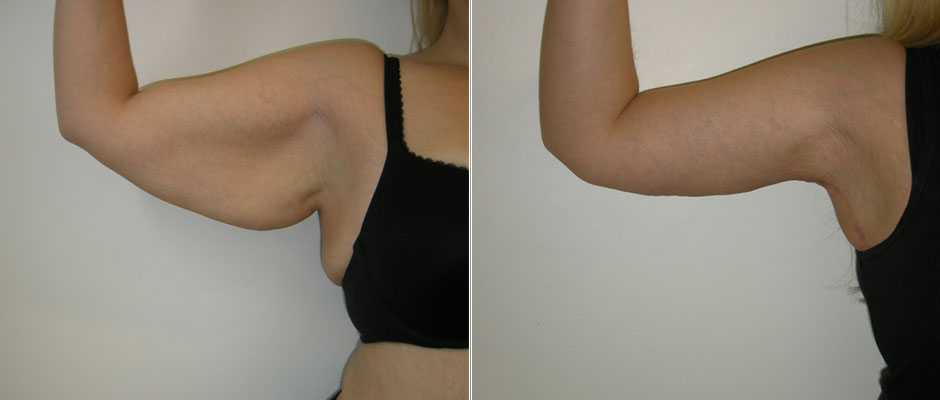
An arm lift, also known as a Brachioplasty, is a cosmetic surgery to treat sagging underarms and the connecting area of the chest wall. The surgery improves the appearance of the under portion of a person’s upper arm. It reduces extra skin, removes excess fat, tightens and smooths the underlying tissue that defines the shape of the upper arm. The surgery can make your upper arms look more defined and toned.
As you get older, your skin changes and becomes loose, particularly the skin on your upper arms. Genetics and significant weight loss also play a role in the development of drooping upper arms. While exercise can strengthen the muscle tone in your upper arm, it cannot correct excess skin that has lost its elasticity.
You might consider this procedure if the undersides of your upper arm appear loose or sagging due to excess skin and fat. Since it can improve your appearance, many people who had the procedure found that it boosted their body image.
In general, good candidates for an arm lift surgery are individuals with significant upper arm skin laxity, individuals who are not significantly overweight, and healthy individuals without medical conditions, as it can increase the risk of surgery.
What is the cost of undergoing the Arm Lift in Panama?
The cost of an Arm Lift varies depending on multiple factors. These include the surgeon's fees, which can vary significantly based on the surgeon's experience and geographical location, the cost of the anesthesia, the clinical facility's charges, and any additional expenses such as lab tests and post-surgery garments.
Insurance usually does not cover the cost of an Arm Lift, as it's considered a cosmetic procedure. However, many surgeons offer patient financing plans to make the procedure more affordable. As prospective patients approach this decision, it's vital to remember that the surgeon's experience and your comfort should always take precedence over cost.
How Long Should I Stay in Panama for a Arm Lift Procedure?
The length of stay following the arm lifts in Panama varies from patient to patient. Some individuals might need one to two nights of hospital stay, especially if the procedure was extensive or if the individual has other chronic health conditions that need monitoring. However, in many cases, individuals will be discharged on the same day when the surgical procedure is completed, contingent on the recovery from anesthesia and initial post-operative stability. It's important that the individual has a support system in place to assist during the first few days. Typically, persons getting an arm lift should expect to stay in the region for a week to two weeks for the initial recovery and follow-up. A longer stay might be necessary if there are complications.
What's the Recovery Time for Arm Lift Procedures in Panama?
The recovery period of an arm lift is typically short as long as you follow your surgeon’s postoperative care instruction. You may be able to return to work and resume some light activities within two weeks, and you should be able to return to your normal daily routine in six weeks. The surgeon may get you to wear a compression sleeve for a few weeks to keep your swelling down. However, allow six months before doing any strenuous and athletic activities, such as sport, because it might stretch the incision. The healing time for your swelling may take two to three months. Contact your doctor immediately if you experience shortness of breaths, irregular heartbeat, chest pains, a fever, or redness of the skin.
What does a Arm Lift Procedure Involve?
Before the actual procedure, your plastic surgeon will likely review your medical history and ask you about any medications you are taking or have taken recently. You may be required to do a physical exam to determine the treatment options, a chest X-ray, and an electrocardiogram. You can also discuss your expectations in terms of appearance post-surgery. During this discussion and evaluation, be sure to ask your surgeon questions and tell them your concerns because it is very important to understand all aspects of an arm lift procedure, such as the benefits and risks. If you smoke, your surgeon will ask you to stop around one or two months before the surgery to reduce the risk of complications.
The surgery can be performed in a hospital or an outpatient surgical facility. Your surgeon will start by marking on the underside of your arms where they plan to make incisions. The incision length depends on the amount of excess skin to be removed and generally placed on the inside or the back of the arm. Then, you are given either general or local anesthesia. Your surgeon will recommend the best choice for you.
Guided by the marks on your arms, your surgeon tightens and reshapes the tissue in your upper arms. Then they pulls your skin back over the tissue and secures it with stitches. If you have any excess fat in the area, suction technique (liposuction) may also be used to remove the fat. Finally, your skin is smoothed over the new contours and excess skin is removed. The whole procedure normally takes two to three hours to finish.
What sort of Aftercare is Required for Arm Lift Procedures in Panama?
Your surgeon will give you aftercare instructions, which will cover what medications to take and when, how to take care of your wounds, warning signs, and a timeline for follow up appointments. It is important to strictly follow your surgeon’s aftercare instructions. Your surgeon may prescribe painkillers and to prevent wound infections you may need to take oral antibiotics or topical medications. While recovering, it is essential to avoid smoking because smoking slows down the healing process and will increase your risk of infections and permanent scarring. To maintain the result of arm lift surgery, you will need to maintain a stable weight and general fitness.
What's the Success Rate of Arm Lift Procedures in Panama?
The success rate of a Arm Lift, such as an arm lift, hinges on factors like the patient's overall health, weight stability post-procedure, and the surgeon's expertise. Ensuring the procedure is performed by a board-certified plastic surgeon can dramatically optimize outcomes. Patient satisfaction post Arm Lift is typically high, with most studies showcasing rates between 80 to 90 percent. This high success rate is often attributed to improved arm contour, enhanced comfort during physical activities, and boosted self-esteem.
However, success is invariably subjective and varies amongst individuals, so it's critical to set realistic expectations whilst bearing in mind that the aim is enhancement, not perfection. Moreover, the occurrence of complications post arm lift procedures is relatively scarce, particularly when under the experienced hands of a renowned surgeon.When the Arm Lift is performed as part of overall body contouring after significant weight loss, the success rates and patient satisfaction tends to be even higher. This is supported by enhanced quality of life experienced by the patients, resultant of simplified daily routines and renewed self-confidence. Overall, the success of an arm lift procedure extends beyond just physical transformation, contributing largely to the individual's psychological well-being.
Are there Alternatives to Arm Lift Procedures in Panama?
If you prefer less invasive procedures, some alternative procedures can be used instead of arm lift surgery.
- Laser Skin Tightening is perfect for those with mild to moderate skin laxity. Your upper arms will be treated with a high-power surgical laser that can stimulate collagen production in your skin. It involves no scarring, no downtime, and almost no uncomfortable feelings. Nevertheless, the results appear gradually and are not as effective as an arm lift. You might need to undergo multiple treatments before you get to your desired result.
- Mesotherapy is used to melt fat and tighten skin. A solution containing amino acids, medication, and natural ingredients will be injected into the middle layer of your skin. The effects will be visible after four to eight weeks and it may not be effective if you have a lot of excess skin.
Other alternatives are Vaser liposuction, Lipodissolve, Thermage, and massage therapy.
What Are the Risks and Complications of the Arm Lift?
Like any surgical procedure, an Arm Lift also carries some inherent risks. Some common complications include infections, seromas (pockets of fluid), hematoma (blood accumulating under the skin), and unfavorable scarring. Other risks involve changes in skin sensation, adverse reactions to anesthesia, and dissatisfaction with the overall aesthetic outcome. In some rare cases, blood clots can form which can be a serious health hazard. However, these risks are typically minimized in a well-equipped surgical setting and under the care of a board-certified cosmetic surgeon.
What are the preparatory steps required before undergoing the Arm Lift in Panama?
Before undergoing Arm Lift procedure in Panama, thorough preparation is necessary to ensure a smoother process and optimal results. Most clinics require pre-assessment consultations to study your medical history and assess your overall health condition. The healthcare provider may conduct some tests, including blood tests or diagnostic imaging, to rule out any unseen conditions. It's crucial for patients to inform about any current medical conditions, allergies, or any medications or supplements they're currently taking.
Smoking and excessive alcohol intake can interfere with the healing process and result in complications after surgery. Therefore, patients may need to abstain from smoking and limit alcohol consumption for a certain period before and after the procedure. It's also advisable to maintain a stable weight and healthy nutritional habits prior to the surgery. On the day of the operation, most clinics suggest that patients come in comfortable, loose clothing.
Whilst the information presented here has been accurately sourced and verified by a medical professional for its accuracy, it is still advised to consult with your doctor before pursuing a medical treatment at one of the listed medical providers
No Time?
Tell us what you're looking for and we'll reachout to the top clinics all at once
Enquire Now

Popular Procedures in Panama
Prices Start From $20

Prices Start From $85

Prices Start From $167

Prices Start From $120

Prices Start From $931

Prices Start From $76

Prices Start From $236

Recommended Medical Centers in Panama for procedures similar to Arm Lift

- Interpreter services
- Translation service
- Religious facilities
- Medical records transfer
- Medical travel insurance
- Health insurance coordination
- TV in the room
- Safe in the room
- Phone in the room
- Private rooms for patients available
Arm Lift in and around Panama
Introduction
Situated as a transcontinental entity, the Republic of Panama straddles the geographic crossroads of Central and South America. The inception of the Panama Canal in 1914 propelled this country into an integral position as a nexus between the Caribbean Sea and the Pacific Ocean. Those who are drawn to visit this radiant country find themselves ensnared in a mesmerizing display of cerulean seas, diverse fauna, deserted islands, bountiful coffee farms, and awe-inspiring rainforests.
The Republic of Panama unites the corners of the world, bridging the two American continents as a vibrant transcontinental nation. The construction of the Panama Canal in 1914 marked a turning point, positioning the nation as a crucial crossroad - connecting the vast expanse of Caribbean waters with the Pacific. The travelers who venture into this country discover an array of rewards awaiting them. The breathtaking beauty of sparkling blue waters, a plethora of enthralling wildlife, desolate islands that evoke an air of tranquility, sprawling coffee plantations, and the awe-striking charm of lush rainforests contribute to the diverse and enticing experiences that Panama has to offer.
Over the past several years, the Republic of Panama is steadily gaining renown as a preferred medical tourism hotspot for myriad individuals across Europe and the United States. The medical professionals operating within the country receive their robust education and accreditation from the United States, thus ensuring their expertise extends to the vanguard of their respective fields. The blend of these proficient doctors and superb medical infrastructure, combined with reasonable pricing on a wide range of medical practices, contributes to Panama's appeal for healthcare needs. Whether one seeks remedial treatments or desires elective cosmetic surgery, there are an ample array of high-quality, cost-effective services available in this picturesque country.
In the recent panorama, Panama has noticed a swift surge in its recognition as a prime choice for medical tourism, attracting numerous Europeans and Americans to its shores. Professionally trained and certified in the United States, the doctors in Panama stand at the forefront of their respective medical fields. Contributing to its desirability as a medical tourism hub is the high-quality care provided by these adept medical practitioners, alongside state-of-the-art healthcare facilities. The affordability of medical procedures in Panama further heightens its appeal. From treatments aimed at correcting medical conditions to elective cosmetic surgeries, the striking beauty of Panama, coupled with its comprehensive and affordable healthcare solutions, makes it an ideal medical destination for individuals worldwide.
Popular Cities and Regions in Panama
Known as the most cosmopolitan capital within the region of Central America, Panama City opens the door to a multitude of tropical getaways while donning the hat of a bustling metropolis. Serving as a focal point for trade and immigration within the region, Panama City represents a vibrant blend of diverse cultures; a veritable melting pot where different backgrounds meet and meld.
Being the epitome of cosmopolitan magnificence in Central America, Panama City beams as the gateway to a spectrum of tropical retreats and simultaneously thrives as a bustling urban settlement. It stands as a central hotspot for regional trade and immigration practices, thereby birthing a profusion of cultures. This city, with its diverse cultural influences, serves as a sophisticated melting pot, crafting a harmonious blend of a myriad of cultures.
Some of the more popular tourist attractions are Teatro Nacional, Panamá Viejo, Donde José, and Parque Natural Metropolitano. Although the capital attracts thousands of tourists each year, the most popular destination is Bocas del Toro. Combining a laid-back Caribbean vibe with the incredible natural setting of forests, jungles, and mangrove, this seaside town is where adventure and relaxation meet. Surfing and snorkeling are extremely popular in this town. However, the real talking point is relaxing in a secluded cove which can only be reached by water taxis.
Transport in Panama
The primary international portal into Panama is the Tocumen International Airport, serving as a critical regional hub for flights moving in and out of The Caribbean, as well as North, South, and Central America. Additionally, it accommodates flights from select cities across Asia and Europe. For intra-country travel, domestic flights are the quickest mode of transport; however, the speed comes with a higher price tag.
Road travel presents a more economical alternative, with buses being the most widely used and cost-effective means of transportation across the country. Within the confines of major cities, taxis are readily available for residents and tourists alike.
Tocumen International Airport is the premier international aerial gateway into Panama. This airport stands as a regional transport hub, connecting Panama with destinations across the Caribbean, North, South, and Central America — even heralding flights from certain European and Asian cities. To journey within Panama, domestic flights offer the quickest, albeit pricier, option. For those prioritizing affordability over speed, buses provide a popular and budget-friendly choice.
Further adding to the transportation options in Panama is the accessibility of taxi services. For those traversing within the major urban areas of the country, taxi services make intra-city travel a breeze. These easily available taxis contribute significantly to the efficiency of short distance commutes.
Additionally, getting around within the key city areas in this country is seamless thanks to the taxi services. For intra-city commutes in Panama's principal urban centers, taxis stand as a thoroughly accessible choice for transportation, simplifying movement within the cityscape.
Visas in Panama
Panama allows citizens of most countries, including all EU citizens and Americans, to visit the country without a visa for 180 days. Some other countries, such as China and the Philippines, need a visa to visit the country. All visitors need to hold a passport valid for at least 6 months.
-
Citizens of over 100 countries, including all EU nations and the United States, can visit Panama without a visa for up to 180 days.
-
Nationals of countries not included in the visa-exemption list need to apply for a visa before traveling to Panama.
-
All visitors must have a valid passport with at least six months remaining validity from the date of entry.
-
Proof of onward travel may be requested upon arrival.
Weather in Panama
Situated comfortably within the tropics, Panama's climate is characterized by distinctive wet and dry seasonal variations. Spanning from mid-March through to December, the wet season tends to bring rainfall every alternate day. However, the showers are typically brief and they mainly occur during afternoon hours, but this season also tends to be quite humid. On the other hand, the dry season extends from December until March. Throughout this time frame, the likelihood of witnessing rainfall dramatically decreases, resulting in overall drier conditions.
Given its tropical location, Panama experiences two distinct seasons: the wet and the dry. Commencing in mid-March and continuing until December, the wet season brings periodic rainfall, which typically occurs in short, intense bursts during the afternoon. However, tourists should remember that humidity levels can peak during this time. Conversely, the dry season, which stretches from December through March, ushers in a period of minimal rainfall, offering a drier climate.
Additional Info
- Local Currency: The official currency is the balboa. The rate of exchange has always been tied to the US dollar. 1 USD equals 1 PAB.
- Money & Payments: ATMs are readily available in most cities and towns. Credit cards are accepted at upscale hotels and restaurants. Tipping is customary.
- Local Language: Spanish is the official language of Panama, as well as the most widely spoken. English is one of the most popular foreign languages.
- Local Culture and Religion: The main religion in Panama is Christianity. However, Buddhism, Judaism, and other religions are also practiced.
- Public Holidays: Panama celebrates Mardi Gras, Los Santos Uprising Day, Independence Day, and Christmas Day among others.
Popular Searches
- Plastic Surgery in Thailand
- Dental Implants in Thailand
- Hair Transplant in Thailand
- Breast Augmentation Thailand
- Gastric Sleeve in Thailand
- Gender Reassignment Surgery in Thailand
- Laser Hair Removal in Bangkok
- Botox in Bangkok
- Dermatology in Bangkok
- Breast Augmentation in Bangkok
- Coolsculpting in Bangkok
- Veneers in Turkey
- Hair Transplant in Turkey
- Rhinoplasty in Turkey
- Stem Cell Therapy in Mexico
- Rhinoplasty in Mexico
- Liposuction in Mexico
- Coolsculpting in Tijuana
- Rhinoplasty in Korea
- Scar Removal in Korea
- Gastric Sleeve in Turkey
- Bone Marrow Transplant in India
- Invisalign in Malaysia
- Plastic Surgery in the Dominican Republic
- Tummy Tuck in the Dominican Republic
- Plastic and Cosmetic Surgery in Poland
- Rhinoplasty in Poland
- Hair Implant in Poland
- Dental Implants in Poland
- IVF in Turkey